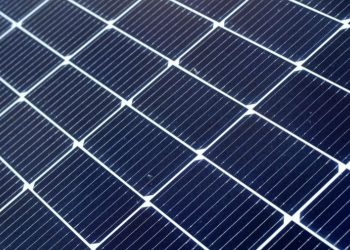Australia has some of the best renewable energy resources in the world. From solar and wind to pumped hydro and emerging hydrogen, the country is well-placed to lead the global shift to clean energy. But when headlines suggest Australia could one day run on 100% renewables, the obvious question is: is it actually possible?
The answer is more than just yes or no. Achieving a fully renewable grid is complex, but we are already making serious progress.
What does 100% renewables actually mean?
For households, the phrase might conjure up an image of living completely off solar panels and a battery. On a national scale, 100% renewables means all electricity demand across the country is met by renewable sources such as solar, wind, hydro, and bioenergy.
Importantly, it doesn’t mean that at every single moment of every day, the grid is running purely on renewables. Instead, it means that across the year, renewables supply as much energy as Australia consumes, balanced by storage and smart grid management.
How close are we already?
Australia is further along than many people realise. In 2024, renewables made up 36% of total electricity generation – an all-time high. That included 18% solar, 12% wind, and 5% hydro.
The National Electricity Market (NEM), which covers most of the country, also passed a major milestone, with renewables supplying more than 40% of annual demand. In Q4 2024, renewables hit a record 46% share of the NEM, with peak renewable generation briefly covering 75.6% of supply. By Q1 2025, renewables still made up a record 43% of electricity supply, the highest first-quarter figure in the NEM’s 25-year history.
South Australia continues to lead the way. The state has transformed from just 1% renewable generation in 2007 to around 70% today. It regularly operates at or near 100% renewable generation, and recently logged 249 hours powered solely by wind and solar. In late 2023, solar alone briefly supplied 101.7% of state demand. The government has even brought forward its net 100% renewable target to 2027.
The technologies making it possible
Getting to 100% renewables requires a mix of technologies working together.
- Solar power: Rooftop solar already supplies over 10% of Australia’s total electricity. Utility-scale solar farms are also expanding.
- Wind power: Onshore and offshore wind projects are critical for providing reliable supply when the sun isn’t shining.
- Hydro power: Traditional hydro and pumped hydro schemes act as giant natural batteries, storing energy for when demand peaks.
- Battery storage: From household batteries to grid-scale projects like the Hornsdale Power Reserve, batteries provide stability and flexibility.
- Green hydrogen: Hydrogen produced with renewable energy is emerging as a way to store and transport clean power, particularly for heavy industry and transport.
The challenges we need to solve
The path to 100% renewables is not without hurdles. The main challenges include:
- Grid stability: Renewable generation is variable, so investment in storage and transmission is essential.
- Infrastructure: New transmission lines are needed to connect remote renewable projects to urban centres.
- Policy and regulation: Governments must provide consistent support to attract investment and encourage adoption.
- Affordability: Ensuring the transition lowers, rather than raises, household bills is key to keeping Australians on board.
What households can do right now
Australians don’t need to wait for government policy or major infrastructure projects to play a part in the transition. There are practical steps every household can take to cut reliance on fossil fuels.
- Install rooftop solar: Solar is still the most cost-effective way to slash electricity bills and emissions.
- Add a battery: Pairing solar with battery storage lets households use more of their own clean energy, especially at night.
- Switch to an EV: Charging an electric vehicle with solar or renewable-powered electricity reduces transport emissions.
- Electrify the home: Replacing gas appliances with efficient electric options, such as induction cooktops and heat pumps, reduces carbon footprints.
Energy Matters can help with all of the above. Our FREE solar and battery quotes service connects you with local and trusted installers. Plus, the Energy Matters Carbon Footprint calculator helps you measure and reduce your impact.
Is 100% renewables realistic?
The short answer is yes, but it requires commitment. Studies from the CSIRO, AEMO, and independent researchers have all confirmed that a fully renewable grid is technically achievable and economically beneficial. Costs of wind, solar, and batteries have fallen dramatically, making them cheaper than new coal or gas.
In fact, delaying the transition could end up being more expensive, as ageing coal plants fail and the world moves away from carbon-intensive imports and exports.
The road ahead
Australia has the resources, the technology, and the expertise to run on 100% renewables. What’s needed now is investment, consistent policy, and the participation of everyday Australians.
Households are already driving the change, with record solar uptake showing that people want cleaner, cheaper energy. As batteries, EVs, and electrification become more accessible, the transition will only speed up.
By acting now, Australians can future-proof their homes, cut their energy bills, and help build a cleaner, more resilient grid.


















